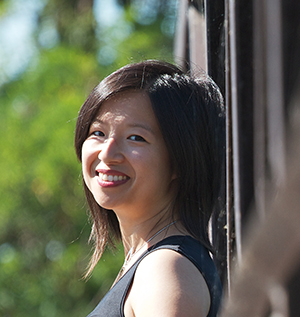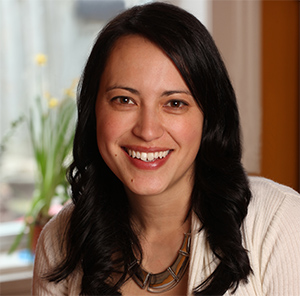Two Voices: Sarah Yi-Mei Tsiang
interviews Y. S. Lee

Past contributor Sarah Yi-Mei Tsiang talks with Y. S. Lee, whose poems from "Motherlands": "Readiness," "Confinement," "SAHM," and "More echoes" appear in our fall issue #224. They discuss her newly-released chapbook, the need for variety in a cycle of poems, and how we are creatures of repetition and return.
Read "Readiness" here.
Y. S. Lee’s poetry has won CV2’s 2022 Foster Prize and been a finalist for various awards in Canada, the US, and Australia. Anstruther Press publishes her first chapbook, Exit Permit, this month and her poems appear/are forthcoming in Rattle, The Literary Review of Canada, EVENT, The Australian Book Review, and other journals.
Ying’s fiction includes the critically acclaimed YA mystery series The Agency (Candlewick Press), which was translated into six languages and won the Canadian Children’s Book Centre’s inaugural John Spray Mystery Award. Her lyric essay, “Tek tek”, was shortlisted for the 2022 CBC Nonfiction Prize. Her first picture book, Mrs. Nobody, will be published by Groundwood Books in 2024.
The poems you have in The Malahat Review all feature two voices, represented spatially on the page. Can you tell us about the process in creating two voices without confusion, one written in third person, present tense, and the other one in first person commenting on the story told about her? Why was it important to you to have these voices separated in time, space, and typographical emphasis?
The second voice, the one in the right-hand column, has been with me my entire life, and I’ll continue to hear it long after that person has died. It was hard to imagine the poems without that second voice talking back, scolding me—and that initially made me reluctant to write about this person at all.
I was also extremely wary of writing revenge poems, with a clear victim and villain. It seemed fairer to me to allow this kind of augmentation, interpolation, disagreement, and I modelled the layout on the gloss in “The Rime of the Ancient Mariner.” I’ve always liked the tension it creates with the main speaker’s narrative, and how it’s represented on the page.
Finally, I love dialogue—it might be my favourite thing to write (I also work in fiction)—and I really enjoy how much you can reveal of a secondary speaker/character with your choices in diction, rhythm, timing. I think my experience in fiction made it seem like a necessary element, and gave me practice in keeping the voices distinct.
“Readiness” and “Confinement” are poems that seem talk to each other about boxes, family expectations, resentment. When you are writing do you hold both poems in your head at once or does each poem build on the next as you go? How do you create these echoes that talk to each other across poems?
Oh, man—I’m only ever writing one poem at a time. I think the echoes exist because that’s how a lot of people work: in our life trajectories, the stories we tell ourselves, our concerns—we are creatures of repetition and return, and when you follow a lifeline in the manner of a biographer, the echoes reverberate. Even before I began to shape the poems into a cycle, I saw how they mirrored and doubled each other, and I cut a number of them for that reason.
Later, my chapbook editor Jim Johnstone encouraged me to make things less linear. He’s a big advocate for “the mystery of poetry” and how successive poems can also be read as ruptures or departures. Sometimes, the echoes are so loud you need to tone them down.
Your endings are always fire. I love how in both “SAHM” and “More echoes” there’s a frustrated sense of impotent violence. What draws you to those moments where violence is a possibility just removed?
It’s telling, I think, that both these poems look at the practical minutiae of parent-child relationships. The care of young children produces so many visceral emotions, among them doubt and anxiety. For some people, those fears emerge as anger—and there are many opportunities for a frightened parent/guardian to choose violence. It’s an ongoing test of character and I’m very interested in that moment of conscious or unconscious choice: what is this person’s instinctive response? How might they delay or transmute that instinct? What are the consequences if they succumb to it? Repeatedly?
While each of these poems are clearly connected, they also are very distinct in style of line breaks. We go from couplets to a roughly matched 1 line—short stanza—long stanza—short stanza—1 line form, to a fully justified and contained prose-poem consisting of one long sentence, to tercets. What considerations go into your decision making around line breaks and form?
I originally wrote the first five or six poems of the cycle entirely in quatrains. I was thinking about boxes right from the start, and quatrains are so conventional and tidy, and ideas and emotions can spill between stanzas in a way that I really like. But Jason Heroux pointed out that in a cycle, readers need variety. I can be stubborn, so I kept writing in quatrains and when I had about ten poems, I read them together for the first time and realized that he was exactly right: it was predictable and nursery-rhymesque and I hated what I’d done.
When I began to revise, I remembered that Sarah Yi-Mei Tsiang (hi!) says that different stanza types have temperaments: couplets are cozy, while tercets carry an internal tension, probably from being an odd number. So I was definitely thinking about your words as I re-worked things. And finally, Sachiko Murakami taught me that with free verse, you have to create your own structure. The monostiches in “Confinement” frame the poem, pinning down its messy middle with bare fact, and the size of the stanzas reflects the subject’s priorities. “SAHM” is a brutal, full-justified brick because parenting young children can really leave you feeling concussed.
Before writing poetry, you published several widely acclaimed YA books. What draws you to poetry and how is the experience different in writing fiction and in writing poetry?
I used to be a casual reader of poetry. It was only after I joined a remarkable writing group full of poets who brought really stunning, potent work into each workshop that I thought, “Oh, I need to try that.” And it’s been wonderful. Poetry unlocked a ton of material that I had struggled with for years, in fiction. Maybe I’m still in the honeymoon phase but poetry often feels like a vacation from fiction. When I’m drafting a novel, much of it is already mapped out; I need to keep walking in the same direction. But poetry is short! Even a long poem is so much shorter than a novel! And it’s a license to try new things any time I please.
You have a chapbook that is being released this month (November)—Exit Permit. (An earlier version of this poem cycle was shortlisted for The Malahat Review’s 2023 Long Poem Prize.) Can you tell us a little about Exit Permit and what we can expect to find in it? Is there a full-length poetry book in the works for you?
Thanks for asking! Exit Permit is a biography-in-verse, and it includes three of the poems in this issue of The Malahat Review. (“Confinement” didn’t make the cut, and I have mixed feelings about that.) It’s also the most intimate thing I’ve ever published. I find that terrifying but it feels like a really necessary risk.
I do have a full-length collection in the works but I’m not in a rush—I’m trying for an anti-careerist approach. (Some of this is built into the genre! It’s not like there’s a financial incentive to produce a manuscript.) But I’m not asking poetry to make my reputation, or put me in the running for a particular kind of job, or change the external features of my life. It’s just something I get to explore. Art for art’s sake.

Sarah Yi-Mei Tsiang
* * * * * * * *









